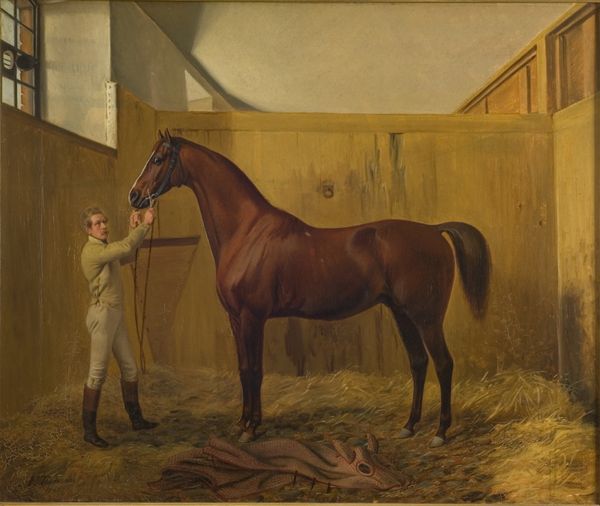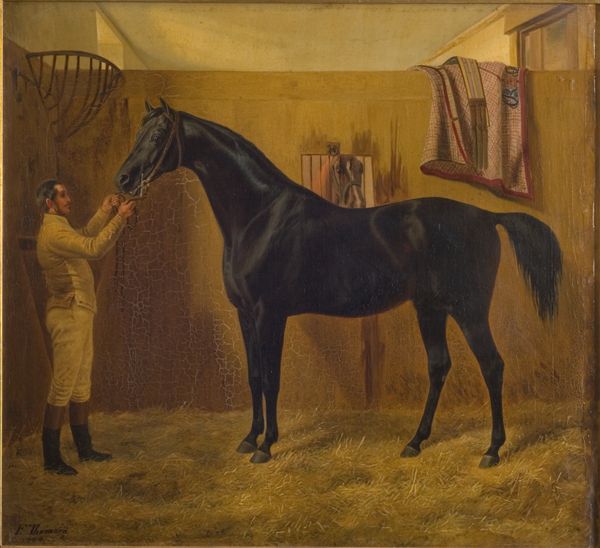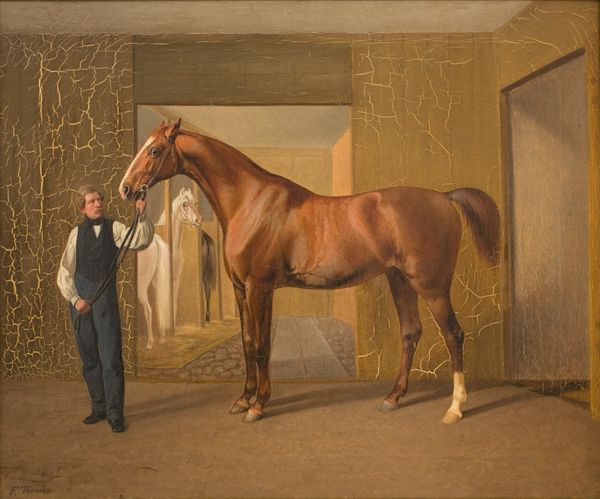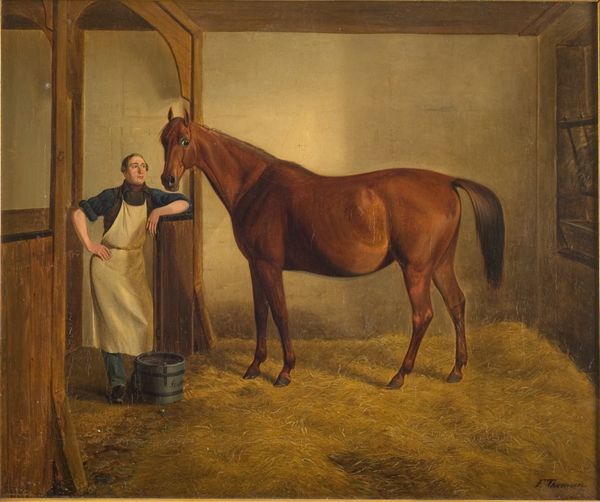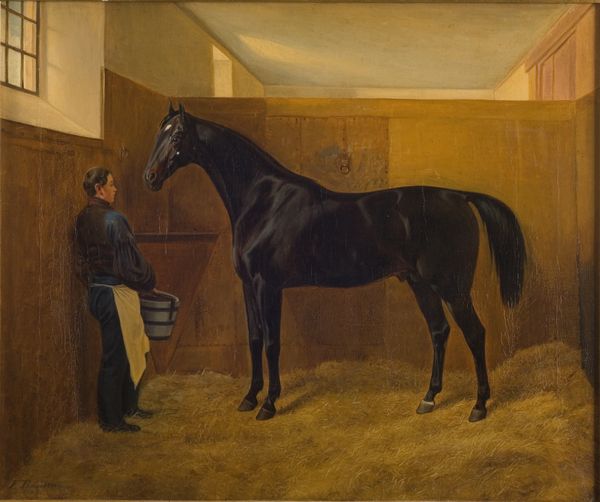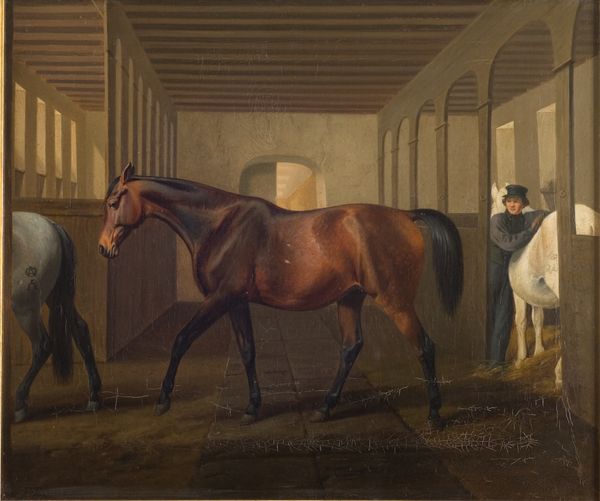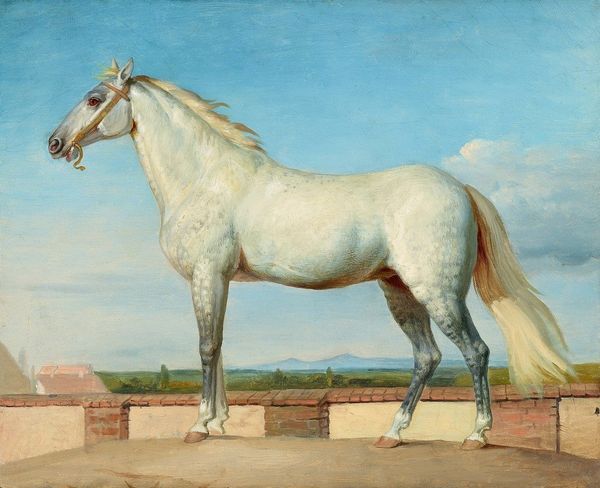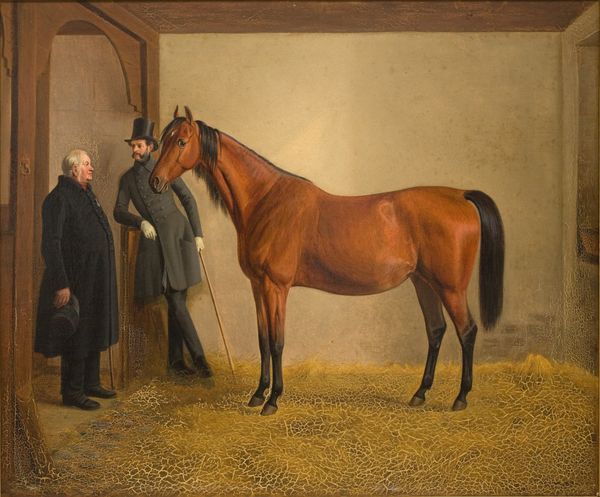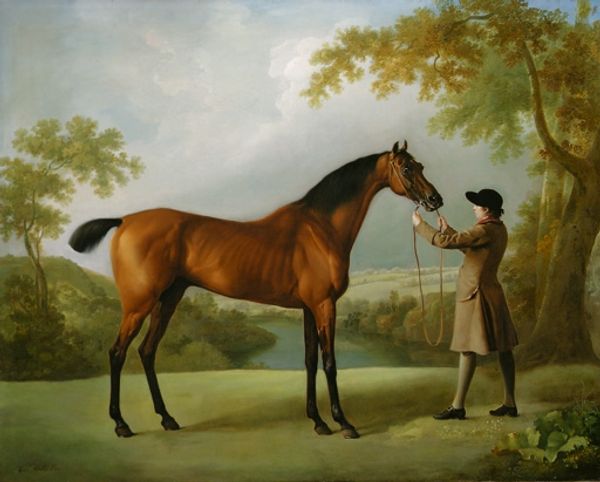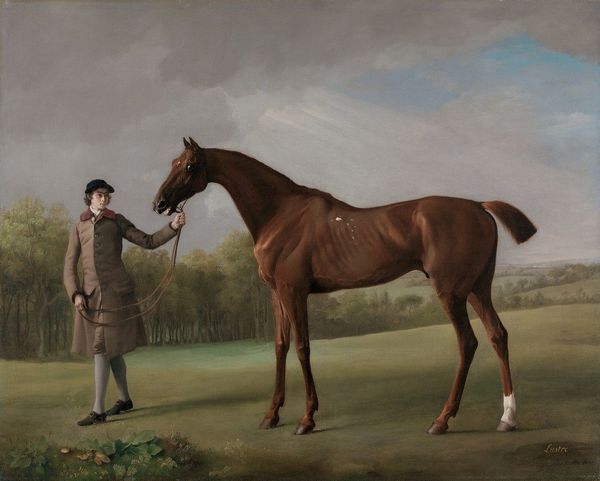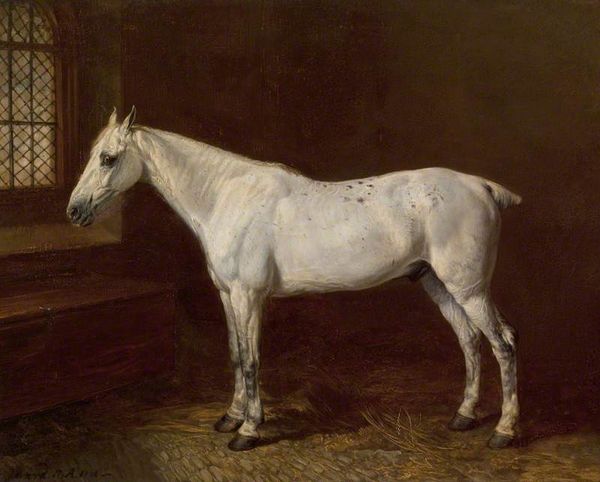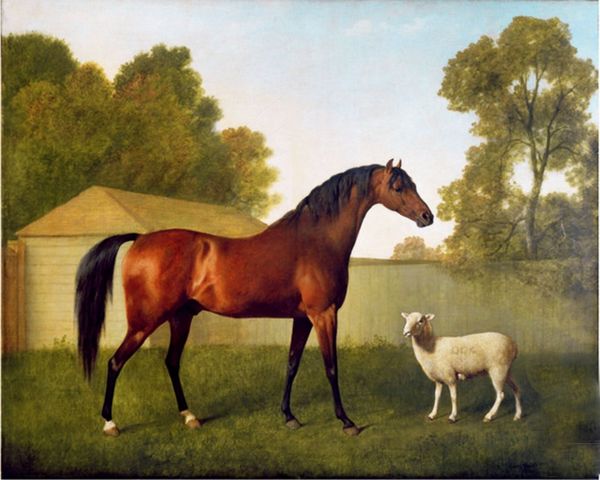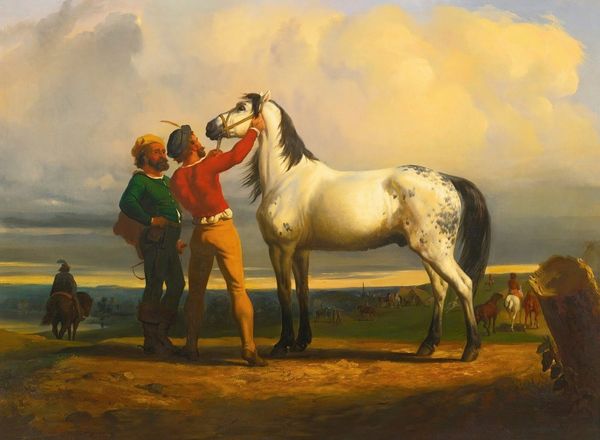
canvas
#
possibly oil pastel
#
canvas
#
underpainting
#
painting painterly
#
animal drawing portrait
#
portrait drawing
#
watercolour illustration
#
portrait art
#
watercolor
#
fine art portrait
#
warm toned green
Dimensions: 45 cm (height) x 55 cm (width) (Netto)
Curator: Upon first viewing "Hother," I’m immediately struck by the animal’s pale coat. It feels incredibly ethereal and slightly unsettling. What’s your take? Editor: Well, considering that this oil on canvas dates back to somewhere between 1834 and 1872, and that its maker is Fritz Thomsen, it invites several questions regarding production and labor, particularly around the means through which an image of such pedigree was created for what purposes, how are animals situated within artistic process. Curator: That’s interesting. And given the precise and refined artistry, let’s delve into the social context that shaped it. Horses like these often held significant meaning beyond mere aesthetics. Hother and equines generally signified prestige and power, reflecting societal structures of class and military prowess. The portraits became very much integrated within class boundaries, specifically if you analyze gender studies here. How would this factor into its legacy? Editor: The rendering itself offers a case in point when discussing societal structures and labor, especially when looking closely at the two characters by the entrance on the left; in this case we can appreciate Thomsen’s understanding of animal anatomy. How are the bodies used? Curator: Agreed. Beyond just anatomy, there’s the implied relationship—a connection of status reflected between the standing figure in stark black clothing and the other. And this all unfolds against the quiet grandeur of the stable’s interior. How do you understand that spatial dimension within it? Editor: The artist definitely puts the emphasis on the materials available, while playing with light to accentuate form and volume and the fact of the production site itself as an aesthetic medium—you notice a strong relationship to interior space that then gives meaning to the animal as an active being of labor as much as pleasure? Curator: I’m not sure I agree with your dismissal here: that opens a lens onto examining what it meant to belong to a world built on privilege. When displayed at SMK (Statens Museum for Kunst) it fosters discourse around access, heritage, and representation within Danish art history. Editor: Right, that access and privilege hinge directly on available materials. Let’s also note the deliberate staging and careful brushwork of the background. These reflect on the larger aesthetic economy and systems of support needed to create it. Curator: Seeing it now, your breakdown highlights a powerful intersection of history and creative application within its composition and display. Editor: Absolutely, examining both aspects enables an experience of artistic production with historical weight!
Comments
No comments
Be the first to comment and join the conversation on the ultimate creative platform.

